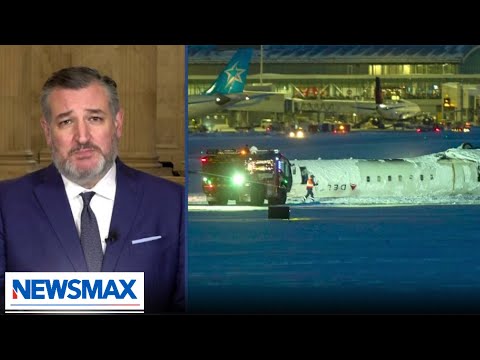In a recent news segment, audiences were treated to a detailed discussion about two alarming aviation accidents. One involved an American Airlines plane and a Blackhawk helicopter, which collided near Ronald Reagan National Airport, resulting in 67 tragic fatalities. The other incident happened in Toronto, leaving 21 individuals injured, with 19 of them already discharged from the hospital. As emergency responders rushed to put out the fire and administer aid, the air travel industry was left grappling with some serious questions about its safety and technological preparedness.
As investigators dive into the wreckage, the National Transportation Safety Board (NTSB) has taken center stage. Known for their expertise and thoroughness, the NTSB aims to reconstruct the events leading to these accidents with precision. With a reputation for detailed examinations, they intend to leave no stone unturned. However, it is vital that everyone keeps their arms and legs inside the ride until the investigation is complete, rather than jumping to conclusions based on speculation.
One of the glaring issues that arose during the discussion was the outdated technology used in air traffic control across the United States. Imagine trying to navigate a bustling city with only a crumpled road map and a flip phone! That’s essentially how air traffic controllers are currently operating—using radar and slips of paper straight from the 1950s. Experts believe that if technology had kept pace with the times, using modern GPS systems, it could have easily prevented the collision near Reagan Airport. This realization was met with frustration, as it raises questions about why aviation is still running on such antiquated systems.
The situation becomes even more complex when looking at military protocols. The discussion highlighted that the Army Blackhawk helicopter at the center of one of the accidents did not have an Advanced Technology Surveillance Beacon (AtsB) switched on. This technology would have given air traffic controllers precise location information on the helicopter, but military flights enjoy certain exceptions to general FAA rules. The current routine policy of turning off this technology for non-classified missions seems to be an oversight that needs serious reevaluation. After all, the safety of our airspace should come first.
It’s clear that both human error and outdated policies contributed to these accidents. A staggering miscommunication was noted in the exchanges between the helicopter pilot and air traffic controllers, as they navigated a busy airspace filled with numerous aircraft. The misidentification of jets and potential confusion could have led to this catastrophic outcome. As we look to the future, it becomes increasingly important to demand advancements in both technology and training in air traffic control to ensure the safety of those flying high above our heads. With continued scrutiny and a push for modernization, perhaps we can minimize the chances of history repeating itself in the skies.



